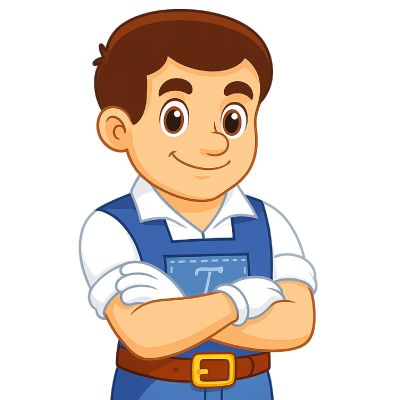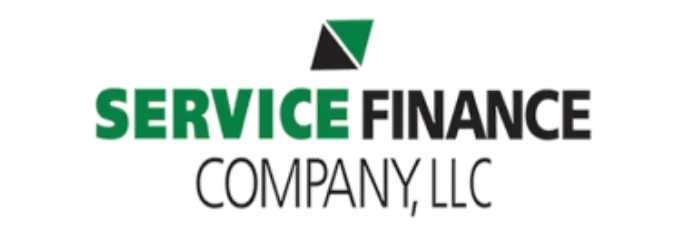Water heaters quietly run in the background of everyday life, delivering hot water for showers, laundry, cooking, and cleaning. Because they usually sit out of sight in a garage, utility room, basement, or closet, it’s easy to forget that a water heater is a powerful, potentially dangerous appliance.
Whether gas or electric, a water heater involves high temperatures, pressurized water, combustion or high-voltage electricity, and connection to your home’s plumbing and venting systems. When installed incorrectly, this combination can lead to fires, explosions, flooding, or carbon monoxide poisoning. Each year, thousands of water heaters are installed by unlicensed contractors or homeowners attempting a DIY project, and many of those installations introduce serious hazards into the home.
This article explains the real risks of improper water heater installation, the dangers homeowners often overlook, and the specific advantages of hiring a licensed professional like SuperBrothers to handle the job safely and correctly.
The Real Risks of Improper Water Heater Installation
At first glance, replacing a water heater can look simple: remove the old tank, set the new one in place, hook up the pipes, connect the gas or power, and turn it on. In reality, a safe installation requires knowledge of fuel gas codes, plumbing codes, building codes, manufacturer instructions, and local regulations.
When those details are ignored or misunderstood, the consequences can be severe.
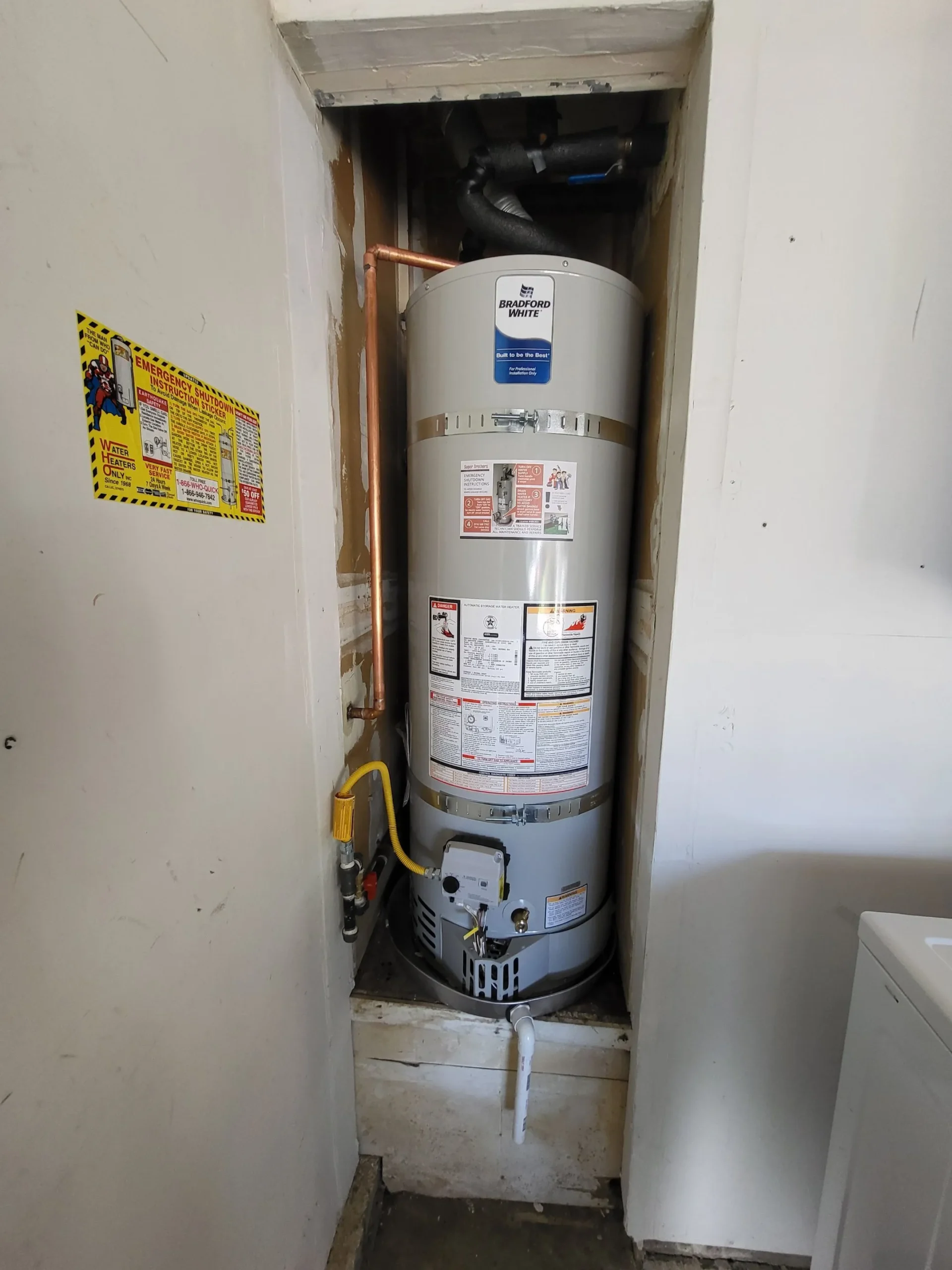
1. Fire Hazards from Poor Clearance and Venting
Gas-fired water heaters burn fuel to heat water, and that combustion process generates both high temperatures and extremely hot exhaust gases. If the heater or its vent is installed too close to combustible materials—such as wood framing, drywall, boxes, clothing, or stored items—those materials can gradually dry out and eventually ignite.
Common fire-related installation mistakes include:
- Placing the water heater in a cramped closet or corner without respecting minimum clearance distances
- Allowing cardboard boxes, paint cans, or other stored items to crowd the heater
- Installing vent pipes that touch or sit too close to wood or other combustible surfaces
- Using unapproved vent materials that can overheat or fail under normal operation
Improper venting can also cause hot exhaust gases to leak into surrounding areas rather than being safely carried outside. Over time, this heat can char building materials and start a fire.
Manufacturer instructions and local codes specify exact clearance distances and approved vent materials. Licensed plumbers know and follow these requirements every day; DIY installers often do not.
2. Explosions from Gas Line Mishandling
For gas water heaters, gas line work is one of the most critical—and most dangerous—parts of the job. A gas leak near a water heater can fill the room with fuel. Any ignition source—the burner, a nearby furnace, a pilot light, or even a light switch—can trigger an explosion.
Typical DIY gas mistakes include:
- Reusing old, cracked, or corroded flexible gas connectors
- Using the wrong connectors, fittings, or thread sealants
- Cross-threading connections or failing to tighten them correctly
- Skipping leak testing with proper methods (not just “smelling” for gas)
- Undersizing gas lines when upgrading to a higher-BTU heater
A professional installer knows how to size gas lines, which fittings are approved, how to test for leaks, and when older gas piping needs to be upgraded. That knowledge dramatically reduces the risk of an explosion in your home.
3. Flooding and Water Damage from Incorrect Plumbing
A typical tank water heater holds between 30 and 80 gallons of hot water. Under pressure, that water can escape very quickly if a connection fails. A poorly soldered joint, cross-threaded fitting, or low-quality connector can burst and release dozens of gallons of hot water across your floor in minutes.
Possible results include:
- Ruined flooring, drywall, and insulation
- Damage to stored items, furniture, and nearby equipment
- Mold growth in damp, poorly ventilated areas
- Structural damage to subfloors or framing from long-term leaks
Beyond basic piping, there’s also the temperature and pressure relief (T&P) valve. This safety device is designed to open and relieve pressure if temperature or pressure inside the tank becomes dangerously high. If the T&P valve is missing, plugged, defective, or not piped to a safe discharge location, pressure can build until the tank ruptures or explodes.
Professional plumbers understand how to:
- Size and connect water lines correctly
- Secure piping to minimize stress and vibration
- Install and route T&P discharge lines to visible, safe drain points
- Use appropriate materials that resist heat and corrosion
This isn’t just about leaks—it’s about preventing catastrophic failure under pressure.
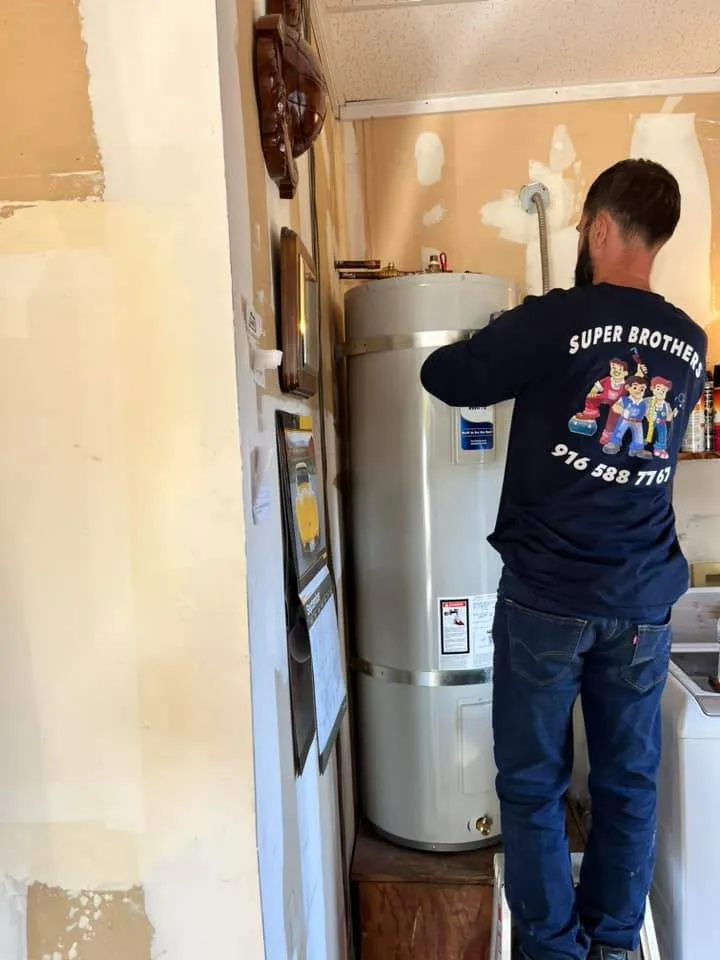
4. Carbon Monoxide Poisoning from Faulty Venting
Gas water heaters produce carbon monoxide (CO), a colorless, odorless gas that can be deadly. Proper venting is the only thing keeping CO out of your living space. A vent that is incorrectly sized, sloped, or installed can cause exhaust gases to spill into the home instead of exiting outdoors.
Dangerous venting issues include:
- Connecting a new, higher-BTU water heater to an old, undersized vent
- Running vent pipes with improper slope or excessive horizontal length
- Using the wrong vent materials for the heater type (atmospheric vs. power-vent vs. direct-vent)
- Improperly combining multiple appliances (furnace, boiler, water heater) onto a shared vent
- Vent terminations that are blocked, too close to openings, or installed incorrectly
Symptoms of venting problems can be subtle at first—sooting around the draft hood, frequent pilot outages, or a faint exhaust smell—but the underlying CO risk is serious. Licensed professionals are trained to verify draft, check for backdrafting, size vents according to code, and ensure there is adequate combustion air.
5. Electrical Hazards with Electric and Tankless Units
Electric storage and tankless water heaters require dedicated circuits with substantial current—often 30 amps or more for standard tanks and 40–60 amps for many whole-house tankless systems. Done incorrectly, electrical work can lead to:
- Overheated wires and junction boxes
- Repeatedly tripping breakers from undersized circuits
- Shock risks due to improper grounding or bonding
- Fire hazards inside walls or panels
A professional installer ensures that:
- The circuit is correctly sized and protected
- Conductors are properly rated and installed
- Grounding and bonding meet electrical code
- Any required GFCI or AFCI protection is in place
What looks like “just three wires” is not something to guess about.
6. Code Violations, Permits, and Insurance Issues
Most cities and counties require a permit and inspection for water heater replacement or installation. These requirements exist for safety, not bureaucracy. A DIY or unpermitted installation can create problems such as:
- Failed home inspections when you sell the property
- Fines or orders to correct the installation from building authorities
- Insurance claim denials after a fire, flood, or injury tied to improper installation
- Void manufacturer warranty because a licensed installer was not used
Licensed plumbers work with permits, inspectors, and codes regularly. They know how to do the job in a way that will pass inspection and protect you with proper documentation.
7. Premature Failure and Higher Utility Bills
Even if a DIY installation appears to “work,” it may never operate efficiently or reliably. Common, performance-killing mistakes include:
- Choosing the wrong size unit for the household’s needs
- Improper temperature settings that waste energy or increase scald risk
- Reversed hot and cold connections, causing poor performance
- Skipping thermal expansion control where it’s required
- Poorly routed hot-water lines that increase heat loss and wait times
A water heater that should last 10–15 years might fail in half that time if it’s constantly stressed or installed incorrectly. Professional installation helps ensure you get the full life and efficiency you paid for.
Dangers Homeowners Often Overlook
Many of the most critical safety details are things a typical homeowner never considers. Unlicensed installers may focus only on “does it heat water?” instead of “is it safe, legal, and reliable?” Here are some of the most overlooked issues.
1. Required Clearance to Combustible Surfaces
Manufacturers specify minimum clearances from the heater and vent to walls, ceilings, and other combustibles. Ignoring those clearances raises fire risk significantly.
Examples of risky setups include:
- Water heaters squeezed into closets or alcoves with almost no air space
- Units surrounded by shelving filled with paint, cardboard, or clothing
- Vent pipes in direct contact with wood framing or insulation
A licensed plumber not only reads and follows the clearance requirements but will also tell you when a space simply isn’t safe for a new unit without modifications.
2. Old, Undersized, or Damaged Venting Systems
Replacing an older water heater with a newer, higher-output model without upgrading the vent is a classic mistake. Older vents may be too small, corroded, incorrectly sloped, or made of materials that no longer meet current standards.
Signs your vent system may not be adequate include:
- Visible rust flakes inside the vent or draft hood
- Loose joints or makeshift tape “repairs” on vent sections
- Persistent condensation or staining around the vent
- Frequent pilot problems or burner issues
A professional will evaluate the vent as part of the installation, not just reconnect to whatever is already in place.
3. Incorrect T&P Valve and Discharge Piping
The T&P valve is a simple device, but it must be installed correctly to work. The discharge line should:
- Be full-size (no reducing fittings)
- Run downhill or level without trapping water
- Terminate in a safe, visible location where discharge will be noticed
- Use approved materials that can handle hot water
DIY errors such as capping the valve, running the discharge line uphill, using small or flexible tubing, or terminating the line in a hidden place can completely defeat this safety feature. A licensed installer ensures the T&P system is fully functional and code-compliant.
4. Sharing Vents with Other Gas Appliances
Many homes have a water heater and furnace or boiler sharing a common vent. If this is done incorrectly, the stronger draft from one appliance can interfere with the other, causing exhaust gases to spill indoors.
Proper shared vent design depends on:
- Appliance input ratings (BTUs)
- Vent type and size
- Vent height and configuration
- Local code requirements and manufacturer instructions
This is not something that can be safely guessed. Licensed professionals use code tables, experience, and test methods to confirm that all appliances vent correctly under real-world conditions.
5. Seismic Strapping and Physical Stability
In many regions, code requires water heaters to be strapped or anchored to resist earthquake forces. Even outside seismic regions, a tall, heavy tank can tip if bumped or if the structure shifts.
A falling water heater can:
- Break gas lines and cause leaks or fires
- Rip out water piping and flood the area
- Damage nearby equipment, vehicles, or structures
Professional installers secure the unit using approved seismic straps, proper blocking, and stand assemblies (where required), so it stays upright and safe.
Signs Your Water Heater May Be Installed Incorrectly
If your existing water heater was installed by a previous owner, handyman, or unlicensed contractor, you can visually check for some red flags:
- No visible T&P discharge pipe, or a discharge pipe that is capped, goes uphill, or disappears into a wall or floor where you can’t see the end.
- Scorch marks, discoloration, or melted materials near the draft hood, vent, or top of the heater.
- Flexible gas connector that is kinked, corroded, or passing through the heater cabinet or wall in a way that looks improvised.
- Vent pipe sloping down away from the heater, having long horizontal runs, or obviously loose or patched sections.
- No seismic straps in an area where they are commonly required by code.
- Water heater sitting directly on the garage floor when a raised stand or drain pan is typically required.
- Persistent pilot light problems, sooting, or noticeable exhaust smell.
- Evidence of leaks, corrosion, or multiple “homemade” repairs around connections.
If you see any of these, it’s smart to schedule a professional inspection. If you smell gas, hear hissing, or suspect carbon monoxide, shut the unit down immediately, ventilate the area, and call a licensed professional and/or your gas utility.
Why Professional Water Heater Installation Is Worth It
DIY projects can be satisfying and cost-effective in the right situations, but water heater installation is not the place to experiment. A licensed plumber brings training, experience, and accountability to the job—things that directly translate into safety and long-term savings.
1. Safety-First Approach and Thorough Testing
Professional installers follow a structured process that includes:
- Inspecting existing gas, water, and venting systems
- Correcting unsafe or outdated conditions before connecting the new heater
- Using approved materials and methods for connections
- Testing for gas and water leaks
- Verifying proper draft and combustion
- Confirming that safety devices like the T&P valve function correctly
This safety-first approach dramatically reduces the risk of accidents in the future.
2. Correct Sizing, Layout, and Vent Design
A pro doesn’t just install what fits in the space; they select what’s appropriate for your home’s needs and infrastructure. That includes:
- Choosing the right capacity and BTU rating for your household
- Ensuring the gas or electric service can support the new unit
- Designing or verifying venting that meets code and manufacturer specifications
- Planning pipe routes that minimize heat loss and maximize reliability
The result is better performance, fewer problems, and a longer service life.
3. Code Compliance, Permits, and Inspection Support
Licensed plumbers are familiar with local building departments and inspection requirements. They know when a permit is required, how to obtain it, and what inspectors will look for. When you use a professional, you get a legal, documented installation that protects you when selling the home or filing an insurance claim.
4. Warranty Protection and Liability Coverage
Manufacturers often require professional installation for warranty validity. Reputable contractors also carry liability insurance and stand behind their work. If a professionally installed heater develops a problem, you have layers of protection—a manufacturer’s warranty, the installer’s workmanship warranty, and their insurance.
With DIY, you assume full responsibility for everything that happens as a result of the installation.
5. Long-Term Efficiency and Lower Operating Costs
A properly installed water heater operates more efficiently, which means lower energy bills and a smaller environmental footprint over time. Professional installers know how to:
- Set appropriate temperature levels
- Optimize recirculation or piping layouts where applicable
- Recommend insulation and other energy-saving measures
Over the lifespan of the water heater, these efficiency gains can easily outweigh the initial cost difference between DIY and professional installation.
What to Expect from a Professional Water Heater Installation
When you schedule a water heater installation with a licensed contractor like SuperBrothers, you can expect a clear, step-by-step process:
- On-site evaluation: The technician examines your existing heater, checks gas/electrical service, inspects venting and plumbing, and discusses your hot water needs.
- Options and pricing: You’ll receive recommendations on the best type and size of water heater for your home, along with transparent pricing for installation and any necessary upgrades.
- Permits (where required): The team handles the permitting and coordinates inspections with local authorities.
- Safe removal of the old heater: The old unit is drained, disconnected, and removed without damaging your home.
- Correction of unsafe conditions: Any obvious hazards—such as undersized vents, missing shutoff valves, or improper gas connectors—are corrected.
- Installation of the new heater: The new unit is set, strapped, connected, and brought up to code using proper materials and methods.
- Testing and commissioning: The system is filled, purged, and tested. Gas and water connections are checked for leaks, electrical connections are verified, and venting is confirmed to be drafting correctly.
- Cleanup and instructions: The work area is cleaned, the old heater is hauled away, and you’re shown how to operate and maintain your new system.

DIY vs Professional: The True Cost
On the surface, DIY appears cheaper: you buy the heater, invest some sweat, and avoid paying labor. But once you factor in the value of your time, the cost of tools and materials, the risk of mistakes, and the potential price of damage or code violations, professional installation almost always comes out ahead.
With a licensed installer, you’re paying for:
- Safety and code compliance
- Reliable performance and longer equipment life
- Warranty and insurance protection
- Peace of mind every time you turn on the hot water
Conclusion: Don’t Take Chances with Water Heater Installation
Improperly installed water heaters are not just an inconvenience; they are a serious safety hazard. Fires, explosions, flooding, and carbon monoxide poisoning can all trace back to cutting corners on installation. A water heater is simply not a project where “good enough” is acceptable.
If you’re considering replacing or installing a water heater, the safest and smartest decision is to hire a licensed professional. The upfront investment in proper installation is tiny compared to the potential costs of doing it wrong.
For homeowners who want safety, reliability, and peace of mind, professional installation is the only sensible choice.
Ready to upgrade or replace your water heater? Contact SuperBrothers today to schedule a professional water heater installation. Our experienced, certified technicians handle everything—from evaluation and permits to installation and testing—so you can enjoy dependable hot water without worrying about hidden dangers.
Don’t gamble with your home and family’s safety. Let SuperBrothers install your water heater the right way, the first time.
Super Brothers Quality
Choose Super Brothers Plumbing Heating & Air because we use top-tier materials, deliver honest workmanship, and back every job with a real warranty. Our pricing is fair and transparent—no hidden fees, ever.
We pull the right permits, build to California code, and pass inspection. Our licensed, highly experienced team handles full plumbing and heating/air replacements and installations, so the job’s done right the first time.
- Top-tier materials
- Honest, quality service
- Workmanship warranty
- Fair, transparent pricing (no hidden fees)
- Permits handled; California code compliant; passes inspection
- Licensed & experienced in plumbing and HVAC installs



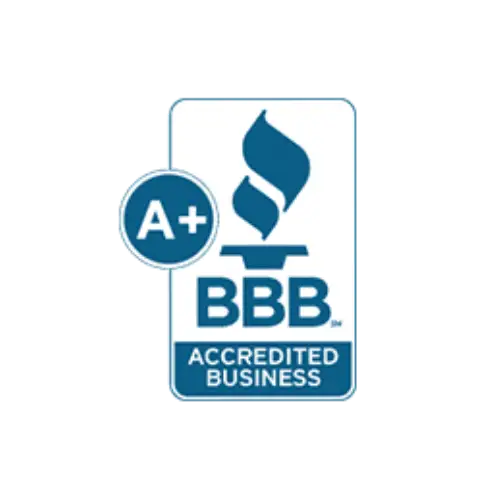
Refer Friends, Reap Rewards

Share our expert plumbing services with friends and family. For every successful referral, you earn cash rewards. Refer Now
